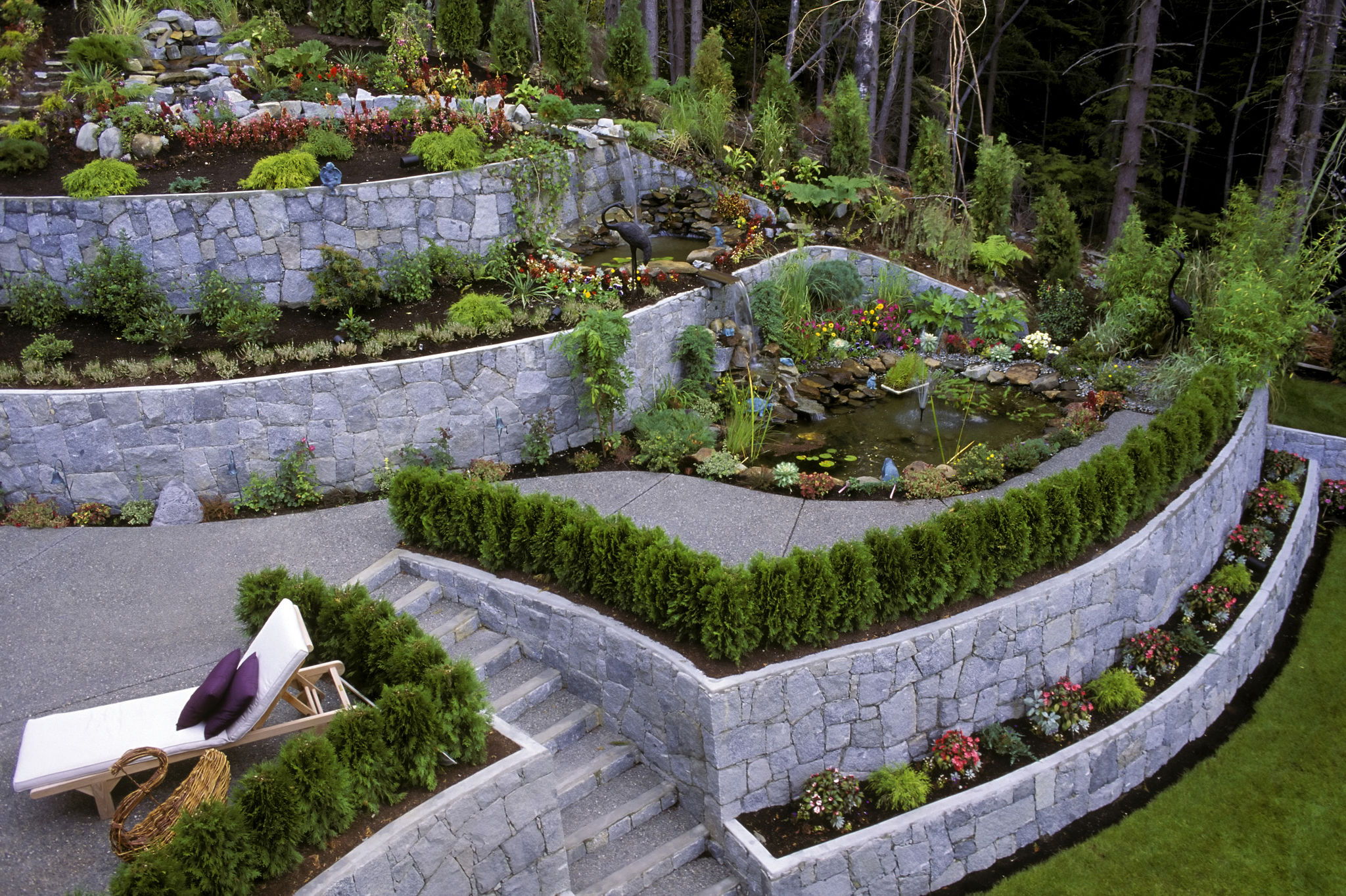Choosing the Right Retaining Walls for Your Landscape: A Comprehensive Guide
Understanding the Purpose of Retaining Walls
Retaining walls are not just for aesthetics; they serve critical functions in landscape design. They help manage water runoff and control soil erosion, making them essential for hilly or uneven terrains. By understanding their purpose, you can choose a design that aligns with both your practical needs and aesthetic preferences.
When selecting a retaining wall, consider the specific challenges of your landscape. Are you looking to prevent soil erosion, create a level space for gardening, or simply enhance the beauty of your yard? Each purpose may require a different type of wall, impacting your choice.

Types of Retaining Walls
Gravity Walls
Gravity walls rely on their weight to hold back soil. They are often made from heavy materials such as stone or concrete. These walls are ideal for shorter applications and can be a striking feature in any landscape design. Their simplicity and strength make them a popular choice among homeowners.
Cantilevered Walls
Cantilevered walls use a reinforced base slab that extends into the soil. This design helps distribute pressure evenly, making it suitable for taller retaining walls. While they require more complex engineering and construction, their durability makes them ideal for significant height differences in the landscape.

Materials to Consider
The material you choose will greatly influence the appearance and durability of your retaining wall. Here are some common options:
- Concrete: Offers strength and flexibility in design.
- Natural Stone: Provides a timeless look but may require more labor to install.
- Brick: Ideal for traditional aesthetics but typically better for smaller walls.
Your choice should align with the existing elements in your landscape to create a cohesive look. Consider maintenance requirements and the material's ability to withstand local weather conditions.

Design Considerations
When designing your retaining wall, pay attention to both form and function. The wall should complement the existing landscape while effectively serving its intended purpose. Consider incorporating curves or varying heights to add visual interest, and don't forget about drainage solutions to prevent water buildup behind the wall.
Furthermore, think about how the wall will integrate with other landscape features, such as patios, walkways, and gardens. A well-designed retaining wall can enhance these elements, creating a harmonious outdoor space.
Hiring Professionals vs. DIY
Deciding whether to hire professionals or tackle the project yourself is crucial. Professional contractors bring expertise and can ensure the stability and longevity of the wall, especially for complex projects. However, if you have experience with similar tasks and the wall is relatively small, a DIY approach could be cost-effective.
Consider factors such as the scale of the project, your budget, and your confidence in executing the design. Consulting with experts can provide insights into potential challenges you might face during construction.

Final Thoughts
Choosing the right retaining wall for your landscape is a decision that involves careful consideration of function, material, design, and execution. By understanding these elements, you can create a beautiful and effective solution that enhances your outdoor space for years to come.
Remember that while aesthetics are important, functionality should always be at the forefront of your decision-making process. A well-chosen retaining wall not only uplifts the appearance of your landscape but also provides essential structural benefits.
